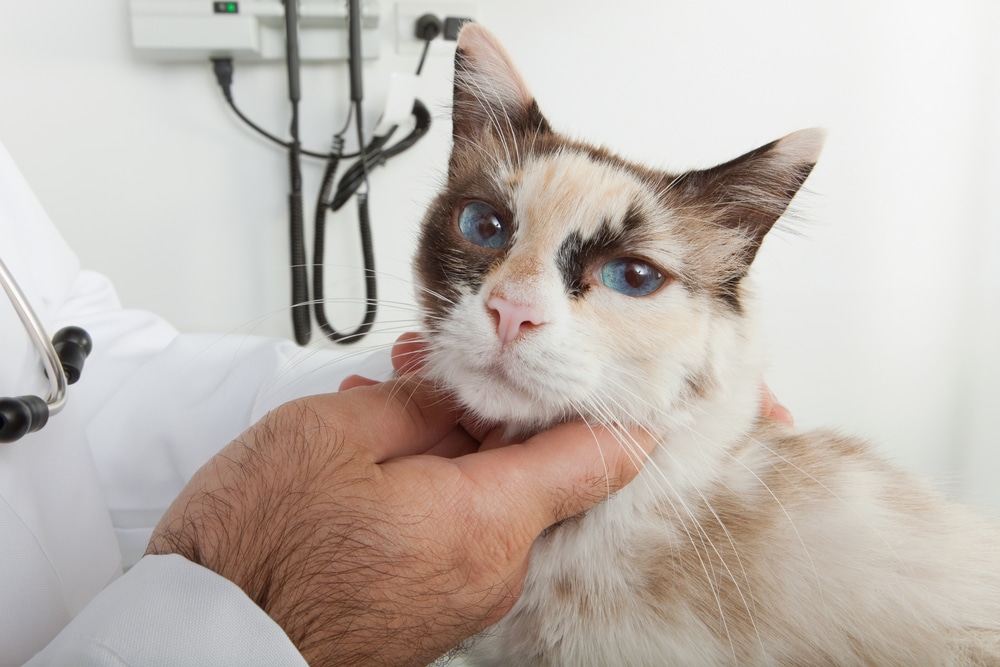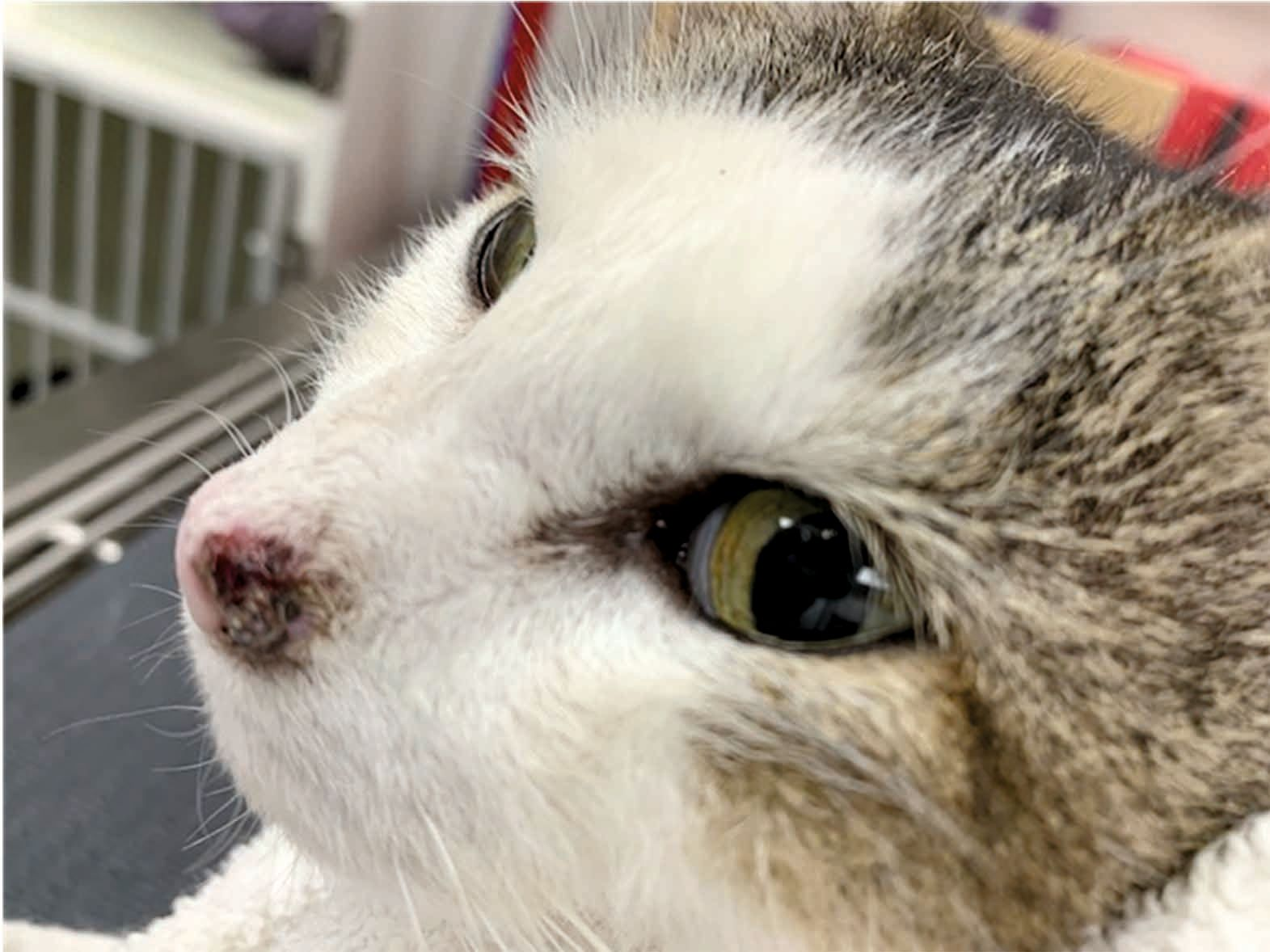neoplasia in cats nose
Abnormal swellings that persist or continue to grow Sores that do not heal Weight loss Loss of appetite Bleeding or discharge from any bodily opening Offensive odor Difficulty eating or swallowing Hesitation to exercise or loss of stamina Persistent. Inhalation of carcinogens implicated in dogs - not known for cats.

Cat 8 Squamous Cell Carcinoma With Infiltrative Growth Into Nasal And Download Scientific Diagram
Was the most common genus while it was unclassified Bradyrhizobiaceae in cats with nasal neoplasia.

. It is also commonly caused by sinus or respiratory infections or injuries to the nose or head. Subsequently dogs and cats are living lon. Nasal polyps are most frequently observed in young cats.
High individual variability was observed. In healthy cats and cats with FURTD Moraxella spp. The incidence in dogs is twice that in cats.
Nasal lymphoma has been reported in FeLV positive as well as FeLV negative cats. Symptoms of neoplasia in cats include 4. Cat nose swollen viral infections Feline AIDS virus FiV feline leukemia FeLV herpes virus or calicivirus can also cause inflammation of the nose.
Nasal tumors are less common in cats than in dogs making up about 1 of tumors in cats. Nasal adenocarcinomas originate from the glandular cells eg sebaceous glands in the nasal cavity. Epistaxis can be a symptom of a serious medical condition like cancer or organ failure.
In cats there is an indication that inflammation of the mucous membrane lining the nose or one of the paranasal sinuses may be the trigger that leads to a growth in the nasal cavity. This shift in their roles has led to pet owners seeking improved preventative medicine for their four-legged friends. Cancer also called neoplasia presents in many different often nonspecific ways in cats.
In cats the most common nasal tumor is nasal lymphoma. In dogs nasal tumors are nearly all malignant and slightly 60 are carcinomas of which. These polyps are composed mostly of inflammatory cells covered by a layer of epithelial cells modified skin cells that extend over the surface of the polyp.
The average age of cats at diagnosis is 10 years however cats as young as 3 years have been diagnosed with this type of cancer. Slow to spread to local lymph nodes and lungs. Lymphoma is a common form of neoplasia in dogs and cats characterized by swelling of one or several lymph nodes in the body.
While cancer is usually diagnosed in senior cats certain cancers can develop in cats of any age. Tumors of the nose and paranasal sinuses account for 12 of all canine or feline tumors. Nasal tumors are found in the nasal cavity and the paranasal sinuses and affect cats.
Previous URT infectioninflammation may cause polyps. These signs can include nose bleeding discharge difficulty breathing sneezing facial swelling facial deformity due to growing mass eye discharge weakness andor weight loss. Nosebleeds referred to as epistaxis are a condition in which blood or bloody discharge occurs from the nose.
Pathophysiology Primary mass in nasal cavity causes local nasal signs nasal discharge epistaxis sneezing and invades surrounding soft tissues facial deformity epiphora. Symptoms of neoplasia in cats include 4. The mean age at time of diagnosis is 9510 years for dogs and 12 years for cats.
What are the symptoms of nasosinal tumors in cats. Squamous cell carcinoma is a common neoplasm in several species. A shallow defect in the skin.
The most common types of nasal tumors in cats are squamous cell carcinoma SCC lymphoma and carcinoma. Cancer in Cats Defined. Nonocular melanocytic neoplasia is considered uncommon in cats yet is routinely encountered in diagnostic pathology and recognized to exhibit a wide variation in biological behavior.
Canine and feline nasal neoplasia Dogs and cats of our society have outgrown their status as merely pets and are now considered our close companions and even family members. Many diseases affect the skin on the noses of cats. Nosebleeds can affect one or both nostrils and this.
There are many different forms of cancer and since the symptoms are so varied any lumps or bumps wounds that dont heal changes in behavior including appetite weight litter box. A nasal tumor is a type of cancer that results from the disorganized uncontrolled production of cells that line the nasal airway. In cats there is some indication that chronic rhinitissinusitis may be an initiating factor for the subsequent development of nasal neoplasia.
Each disease will also have other specific symptoms relating to it. Incidence is also higher in males of both species than in females. Symptoms of nasal cancer in cats can remain concealed for as long as five years until the disease presents itself as a serious threat.
Nasal vestibule is the most common site for feline nasal SCC malignant melanoma and basal cell tumor. Neoplasia may also develop inside the nose of both cats and dogs. Nasal tumors are less common in cats than in dogs making up about 1 of tumors in cats.
Ocular squamous cell carcinoma is most common in animals with light pigmentation around the eyes because sun exposure is one of several predisposing factors. Benign nasal tumors include adenoma 19 of epithelial tumors in cats basal cell tumor fibroma and neurofibroma. Accurate prediction of clinical outcomes is challenging with no widely recognized prognostic criteria.
Conclusion This study demonstrates that the nose of cats is inhabited by much more variable and diverse microbial communities than previously shown. These may also be accompanied by sneezing and even wounds and scabs on the cats nose. Polyps may be up to 1-2 cm in length extending into the nasal passages or the ear canal.
In dogs the most common nasal tumor is nasal adenocarcinoma. 1 Does My Cat Have Nasal Cancer. Neoplasia abnormal tissue growth Congenital abnormalities eg cleft palate Presence of a foreign object within the nose Nasal polyps nonmalignant tissue growth or tumor in nose Diagnosis Upon initial examination it is likely that the veterinarian will look for signs of tooth root abscess and ulcers.
The symptoms of nasosinal tumors can overlap with those of other causes of nasal disease. These signs can include nose bleeding discharge difficulty breathing sneezing facial swelling facial deformity due to growing mass eye discharge weakness andor weight loss. Neoplasia may also develop inside the nose of both cats and dogs.
Older cats however may also be affected.

Learn About Nasal Cancer In Cats Petcure Oncology
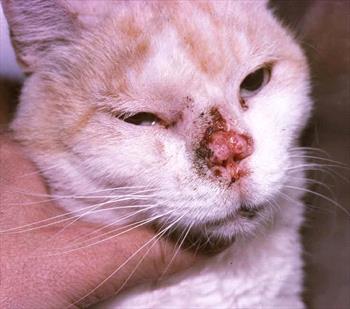
Nasal Squamous Cell Carcinoma In Cats Veterinary Partner Vin

Cat 6 Squamous Cell Carcinoma On Nose Stage T2 One Ect Session Download Scientific Diagram

Facial Distortion And Epiphora In A Cat With A High Grade Large B Cell Download Scientific Diagram

Visiting Vet Cappuccino The Tabby Cat The Martha S Vineyard Times
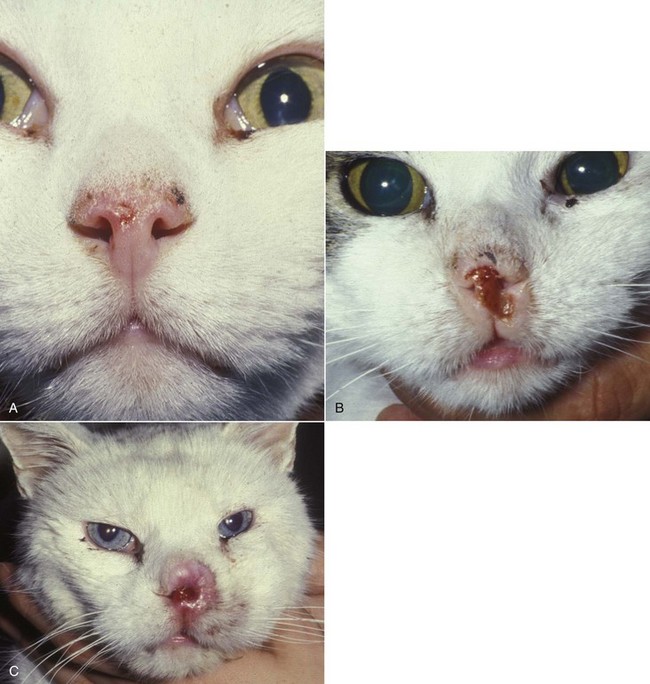
Tumors Of The Respiratory System Veterian Key

Cat 7 Squamous Cell Carcinoma On Nose Stage T4 Two Sessions Of Download Scientific Diagram
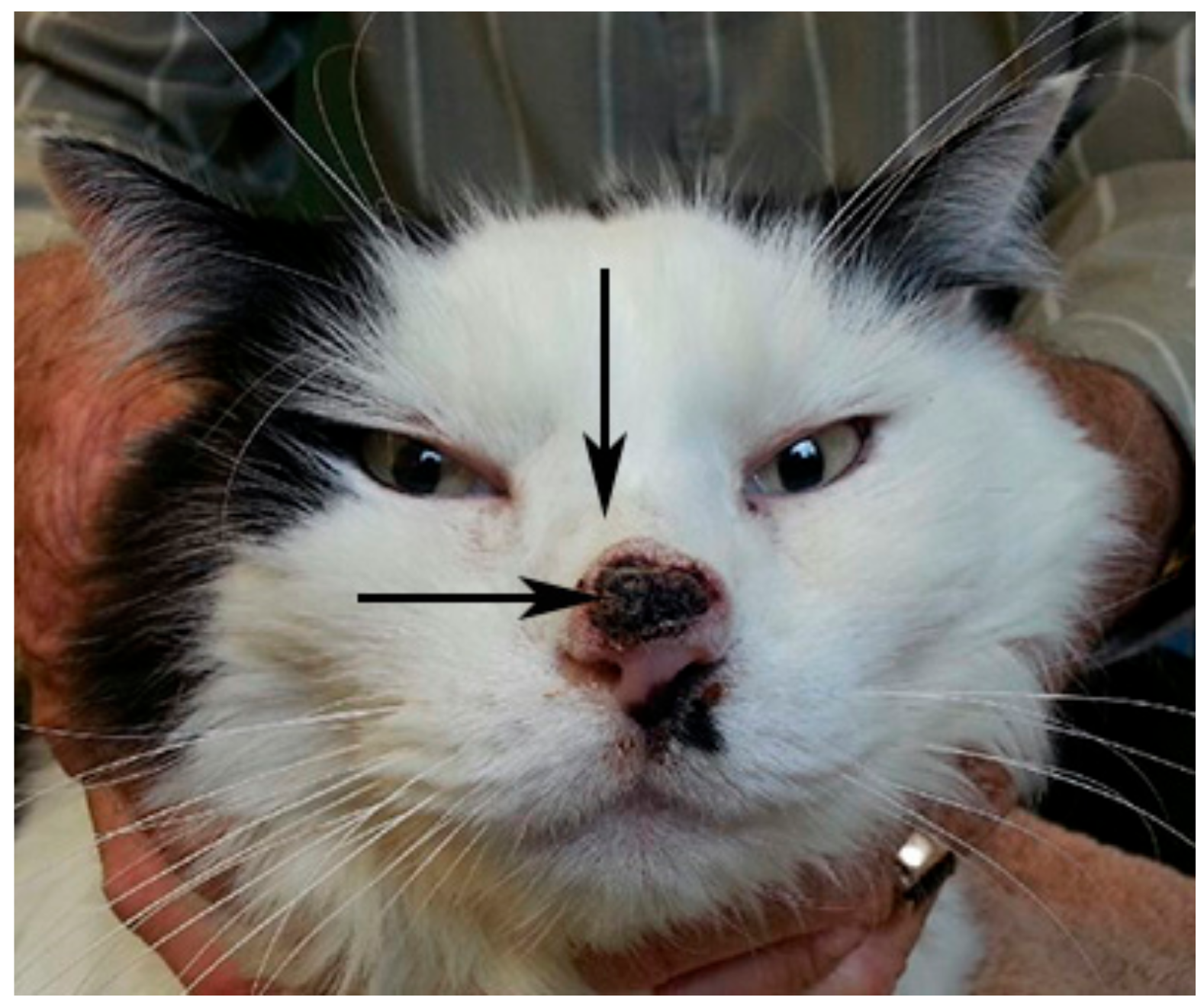
Viruses Free Full Text Identification Of A Novel Papillomavirus Associated With Squamous Cell Carcinoma In A Domestic Cat Html

Nasal Squamous Cell Carcinoma In A Cat Treated With One Session Of Download Scientific Diagram

My Cat Has Nose Cancer Diagnosed 5 Years Ago Does It Hurt R Cats

Nose Cancer In Cats Causes Symptoms Treatment All About Cats

Diseases Of The Feline Nasal Planum Vet Focus
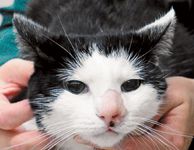
Canine And Feline Nasal Tumors
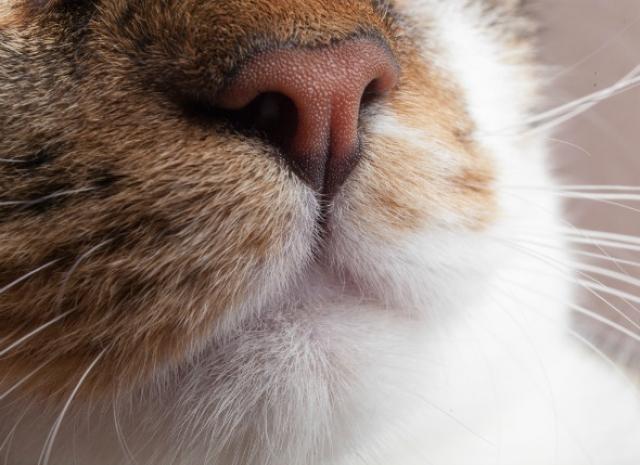
Nose And Sinus Cancer Squamous Cell Carcinoma In Cats Petmd


